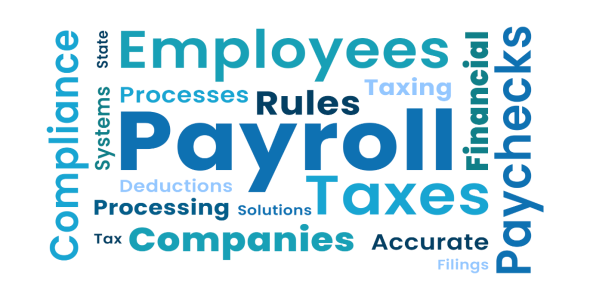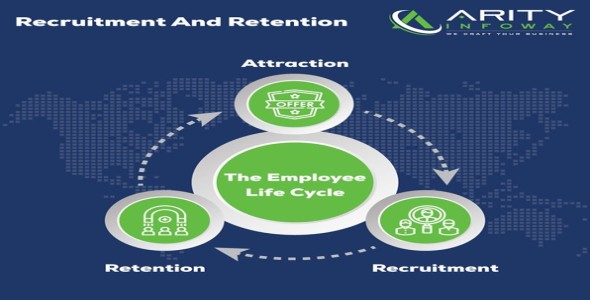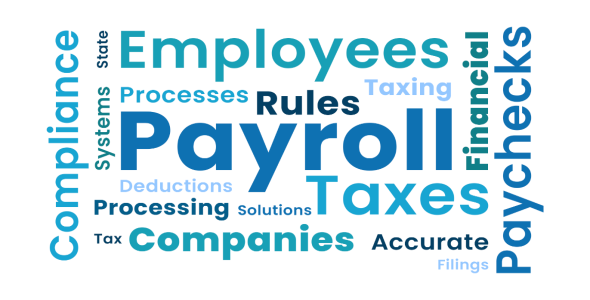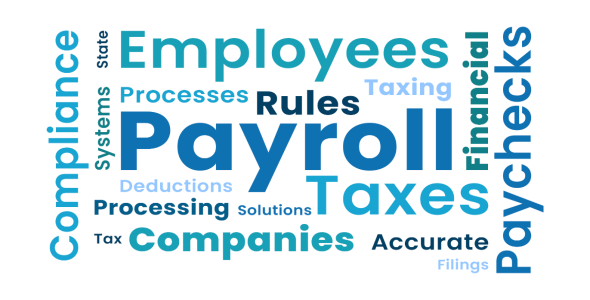Blog Details
HRM - PAYROLL
What is Payroll?
In simple word “The number of employee and the amount to be paid”.
The Payroll in HRM
In HRM Payroll plays an important role for the employees who gets paid for their efforts towards the company and the task they are assigned to. This is much important for an employee to get the benefits for his dedicated work on time.
Cycle of Payroll
The basic structure of payroll which I have described below:
-
1) Employee Time Details
Where each employee’s working hours will be counted as well as the overtime too. The time will be counted through different ways such as biometric, or any kind of login device.
-
2) Monthly Payment
Where the monthly amount will be listed that should be paid to the employee as per decided.
-
3) Deduction
Where the deduction process will be initiated in which the amount of PF.TAX, CTC Leave deduction or others will be deducted as per the company norms.
-
4) Over time
Where the overtime shift allowance will be mentioned and given to the employees.
-
5) Payment Reports
Where every detail including time, date, monthly payment, deduction, and overtime will be mentioned.
-
6) Final Update Report
Where after all deduction and overtime pay the amount to be paid will be in final report of pay.
How it works?
In HRM if company is using automatic payroll process, then the machine will get the details like attendance and time leave details and overtime shift details from the system and will calculate the exact payroll for xyz employee.
After setting up the payroll system first thing to do Is to understand the flows of each operation and how it works. Once you get to know the flows and its working mechanism this system will help you balance your payroll activity. So, you can focus on the business rather then doing the payroll activity.
In this payroll system apart from the operations there are many other key features which are useful for any organization. Below is the list of key features that we need to know about.
Employee side functionality
-
1) Shift
The shift details of employee which they have choose to work.
-
2) Attendance
The biometric device details of each employee.
-
3) Leave
The leave management of each employee.
-
4) Overtime
The overtime allowance to be paid for the employees.
Deduction functionality
-
1) TDS, PF, ESI
The TAX, PF, PT, medical security this all should be deducted as per the Indian Government Rule.
-
2) Leave
The non-paid leave deduction.
HRM Side features
This are the basic and mandatory operation which are performed in a payroll system. All you need to know is a Financial Balance and management that benefits the employee for their work.
-
1) Salary structure
Where the salary structure will be maintained by the HR and including allowance and deduction as well as overtime pay everything will be in detailed structure format.
-
2) Some extra allowance
As per the company norms some extra benefits if the employee is getting then that will be also managed by the HR. Like Retirement benefits, Child Education, or other financial allowances gross and net earnings.
-
3) Company services
Some of the services provided by the company to employees like Transport expense, Canteen / cafeteria, Health Insurance etc.
What is Gross & Net Pay?
Here Gross pay is the total amount of salary of any employee and Net Pay is the amount to be given to the employee after all the deduction.
Gross pay : Cost to Company - Gratuity + Allowances.
Net pay : Gross Pay - Gross Deduction (TDS EPF etc.)
Final Process for calculation
After all the operations here comes the final calculation where the company will finally deposit the salary in xyz employee’s bank account.
There are many other payroll systems too like e-payroll system in which after collecting and combining all the data and inputs by only one click you get the final salary to be paid which helps you to minimize your work for salary management.
Types of Payment in Payroll?
This are the different method for paying the salary to the employees. Make sure whatever method you are choosing to keep the record for future use. You can provide the Payslip to the employees after the payment for record.
- 1) On Hand
- 2) Check
- 3) Bank Transfer
Different methods to run Payroll
-
1) Self-management
In this method the authorised person will manage the payroll by creating the salary sheet and calculating the salary by using some built in math functions. And then creating the final sheet for payment.
Not forgetting that it may cause little trouble as while entering value a person can create mistake or add different value by mistake.
-
2) Third party management
When company gives this authority to third party person or system to handle its payroll management. This only happens when a company has no person to manage these things.
It has a small disadvantage as company’s data and bank details will be shared to third party unless the person is trustworthy.
-
3) E-Payroll Management
There is a platform called “Payroll Management Platform”, where it helps you to automate your payroll related management and monthly calculations of amount to be paid without any error or mistake. Meanwhile it helps you and saves maximum of your time too so you can focus on your business more.
Let us see what our Indian Government Payroll Compliance says?
According to the Payroll system it is said that you must update the pay policy of your company at times as it is necessary to change or update. As per the Indian Government below are some mandatory deductions that we must follow.
-
1) Tax Deduction from Source (TDS)
This is the income tax deduction from an employee’s salary. This Tax can be also deducted from different payments like Rent, received Interest from any Fixed Deposit. It helps you to minimize the TAX evasion later. Our government have finalized different deduction rates for different amount.
-
2) Employee’s State Insurance (ESI)
The organization that have 10 or more than 10 employees ESI will be liable on that organization. The health care of an employee is the focus of ESI. Below is the calculation of employee’s contribution and employer’s contribution for ESI.
Contribution % Of Gross Pay Employee’s Contribution 0.75 Employee’s Contribution 3.25 -
3) Provident Fund (PF)
This fund is for the Post Retirement benefits that an employee will get. It is divided in 2 funds.
EPF - Employee’s Provident Fund
EPS - Employee’s Pension Scheme
Below is the table for contribution %
Employee Employer EPF 12% of Gross 3.67% EPS 0 8.33% Total Contribution 12% 12% -
4) Tax Slabs
Here all you must know about the tax liability for employees for the new tax regime for the year 2020-21.
Income Tax Slab Tax Rate Up to Rs 2.5 lakh NIL Rs 2.5 lakh to Rs 5 lakh 5% Rs 5 lakh to Rs 7.5 lakh 10% Rs 7.5 lakh to Rs 10 lakh 15% Rs 10 lakh to 12.5 lakh 20% Rs 12.5 lakh to Rs 15 lakh 25% Rs 15 lakh and above 30%
challenges While Using Payroll System
The payroll system is user friendly and helps us to manage the pay scale. But it has some disadvantage too. Let us see the challenges we face while using the payroll system.
-
1) Compliance low/rates decided by the government
As we have mentioned earlier that company’s payroll policy must be updated time to time, by doing that company needs to keep this in mind that it is must be compliance with the lows formed by the government. If a company is using the payroll management by itself, then company should take advise from any authorised account person or else choose the e-Payroll which helps you manage the payroll of your under-government norms.
-
2) Making sure all date is Faultless
For the payroll the employee details like attendance, leave, time management are most important details which should be verified correctly. If a person is entering the details, then there are chances of mistake and fault data entry. To prevent from this, you can use modern platform that provides facility of integrated management for these data for payroll.
Perfect payroll System for required characteristics?
In above we have seen almost all about payroll and its importance. To know the perfect payroll system here, we have mentioned some characteristics check them out.
- Statutory Compliant
- Integrated Accounting
- Accurate attendance & leave management
- Scalability
- Employee Self service module
Above mentioned characteristics proves that the payroll system you are using is perfect way to manage the pay scale for your company.




